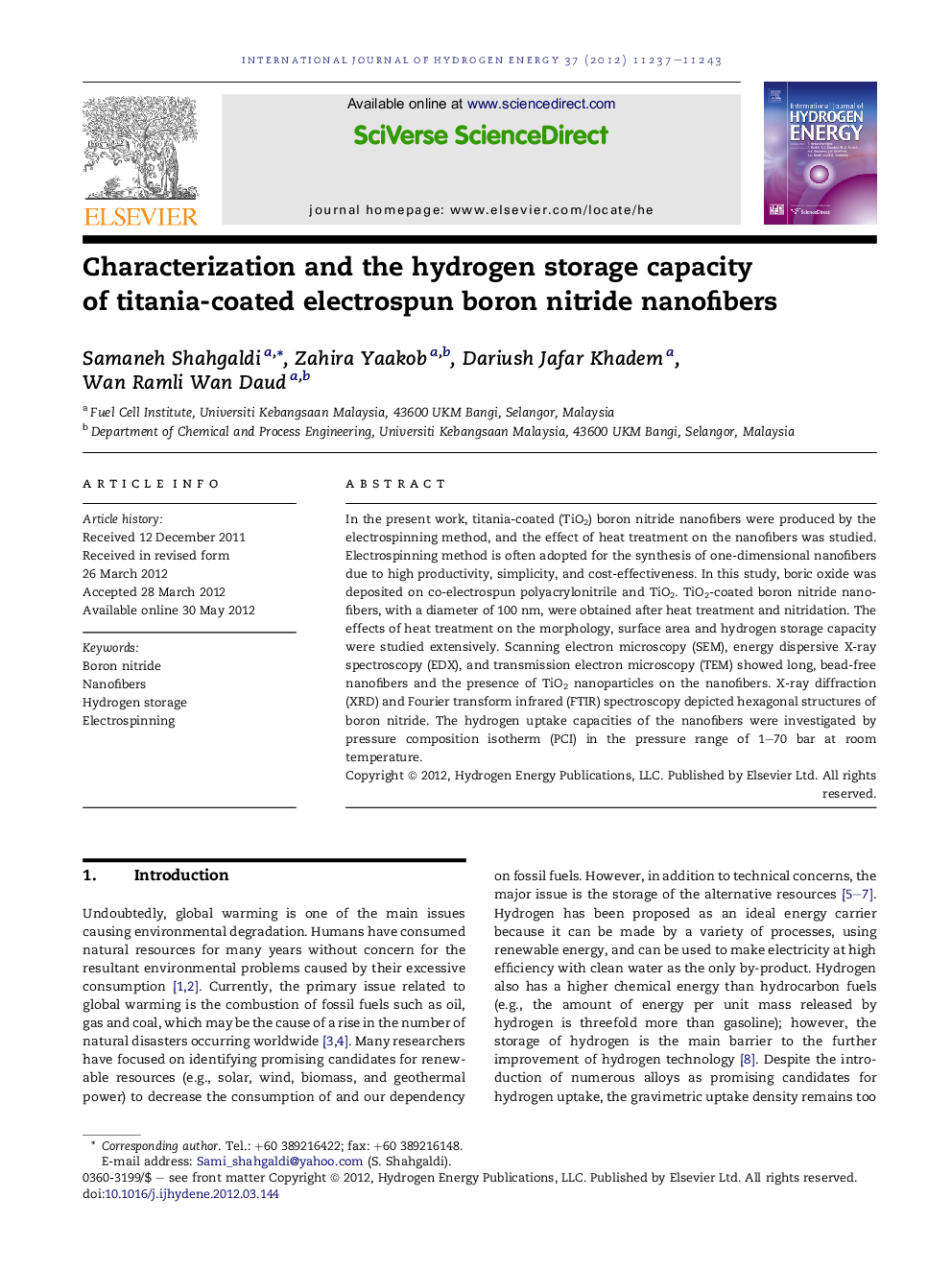| Article ID | Journal | Published Year | Pages | File Type |
|---|---|---|---|---|
| 1276287 | International Journal of Hydrogen Energy | 2012 | 7 Pages |
In the present work, titania-coated (TiO2) boron nitride nanofibers were produced by the electrospinning method, and the effect of heat treatment on the nanofibers was studied. Electrospinning method is often adopted for the synthesis of one-dimensional nanofibers due to high productivity, simplicity, and cost-effectiveness. In this study, boric oxide was deposited on co-electrospun polyacrylonitrile and TiO2. TiO2-coated boron nitride nanofibers, with a diameter of 100 nm, were obtained after heat treatment and nitridation. The effects of heat treatment on the morphology, surface area and hydrogen storage capacity were studied extensively. Scanning electron microscopy (SEM), energy dispersive X-ray spectroscopy (EDX), and transmission electron microscopy (TEM) showed long, bead-free nanofibers and the presence of TiO2 nanoparticles on the nanofibers. X-ray diffraction (XRD) and Fourier transform infrared (FTIR) spectroscopy depicted hexagonal structures of boron nitride. The hydrogen uptake capacities of the nanofibers were investigated by pressure composition isotherm (PCI) in the pressure range of 1–70 bar at room temperature.
► Synthesis of titania doped boron nitride nanofibers via electrospinning. ► The effect of heat temperature on morphology of boron nitride nanofibers is studied. ► Surface area and pore size of titania–boron nitride nanofibers are investigated. ► Titania doped boron nitride nanofibers demonstrate good hydrogen storage capability.
